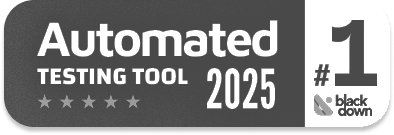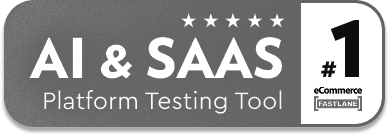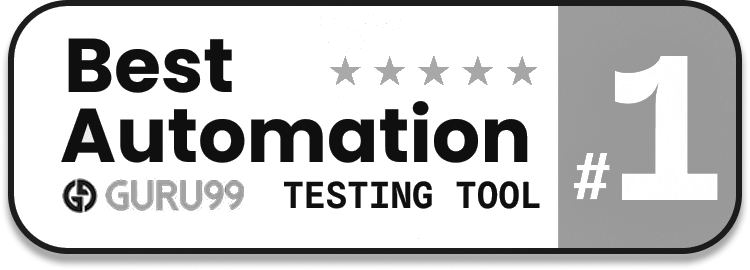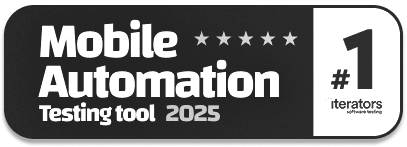Who is a T-shaped Tester and How to be One?
|
|
Have you ever heard someone talk about how they’re a T-shaped professional and wondered, “Wait, is that a kind of buzzword or something you learn about at a motivational seminar?” Don’t worry, you’re not alone. But really, it is an awesome, practical, and powerful concept, especially for those of us working in software testing.
Key Takeaways
|
Today, it’s not enough to be good at just one thing. The really strong testers that everyone wants are the ones that can also go very deep in whatever their area of expertise is, but who know what’s happening around them. They can speak code with developers, ideate on features with product managers, maybe even throw out a Docker command or two if necessary. Just one of the many wonders of being T-shaped.
So, what does it actually mean to be a T-shaped tester? Why should you care? And, more importantly, how do you become one? So let’s understand it in detail.
What is a T-shaped Professional?
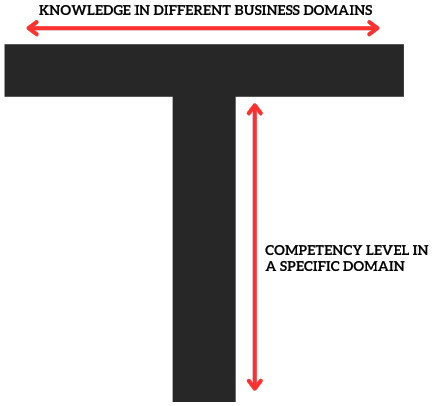
A T-shaped professional is a person who combines deep expertise in a single field with a broad set of complementary skills across multiple disciplines. This concept is visually represented by the shape of the letter “T”:
- Vertical bar (|): This indicates a person’s level of competency in a specific domain. A data scientist, for instance, might be deeply skilled in machine learning or statistical modeling. Vertical bar specializes in areas such as:
- Manual Testing: Deep understanding of exploratory testing, test case design, user journey validations, etc. Read more: Manual Testing: A Beginner’s Guide.
- Automation Skills: Writing robust automated tests using tools like Selenium, Cypress, Playwright, Robot Framework, etc.
- Performance Testing: Using tools like JMeter and Gatling to assess responsiveness and stability. Read more: What is Performance Testing: Types and Examples.
- Security Testing: Familiarity with OWASP Top 10, ethical hacking basics, and security scanning tools. Read more here: Security Testing.
- Test Strategy & Planning: Building test strategies, managing test coverage, risk-based testing, traceability, etc.
- Horizontal bar (––): The width of the knowledge in different business domains. For example, a data scientist with that exact set of skills may know about software engineering, data visualization, and business strategy. Horizontal bar familiarizes with:
- Basic Programming Skills
- Learn to code in your team’s language (eg, JavaScript, Python, Java).
- You should be able to read code, use conditionals and loops, and debug test failures.
- DevOps Awareness
- Be familiar with CI/CD pipelines (Jenkins, GitHub Actions, GitLab, etc.
- Understand the impact of Docker and Kubernetes on your testing environments.
- Understand how to run automated tests on deployment, and be able to read logs.
- UX and Accessibility
- Understand how people use your product.
- Learn WCAG guidelines and how to test for screen reader compatibility, keyboard navigation, contrast ratio, etc. Read: Accessibility Testing.
- Business Analysis
- Understand how product features can be aligned with business objectives.
- Join in user story reviews and refine acceptance criteria.
- Agile and Scrum Practices
- To actively participate in stand-ups, sprint planning, and retrospectives.
- Participate in backlog grooming and the demo.
- Product Lifecycle Knowledge
- Learn how new features go from idea to release.
- Monitor product metrics and KPIs to align testing.
- Basic Programming Skills
T-shaped professionals are admired because of their ability to be flexible, adaptable, and work effectively across teams. Specialize and make a real impact in their area, while also knowing the bigger picture and enabling teams to move forward together.
Origin of the Concept
The idea of T-shaped skills emerged in the 1990s at IDEO, an iconic design consultancy famous for its thinking about innovation and human-centered design. The company implemented the concept to create multidisciplinary teams, where people could lead in their specialty as well as collaborate across a wide variety of disciplines.
Timeline of Adoption:
- IDEO(1990s): Co-developed as a way of emphasizing the role of empathy and team collaboration among design teams.
- McKinsey & Company: Later brought the term to consulting, acknowledging the need to bring together depth and breadth of expertise for solving complex business problems.
- Agile Software Development: The idea of T-shaped became even more relevant in Agile teams, where cross-functional cooperation and shared responsibility of the work are a part of the game. T-shaped team members add flexibility to help minimize handoffs and silos, being able to take on secondary roles when necessary (even at a very basic level).
Why the Industry Needs T-Shaped Testers
The era of Agile and DevOps has brought about a seismic shift in how teams are formed and how they work. Dev and ops don’t happen in isolation from one another anymore. In contrast to this, cross-functional teams with developers, testers, business analysts, designers, and DevOps engineers work closely together to produce valuable software in short iterations.
In this environment, specialized testers, who are not aware of the overall software development lifecycle, may restrict the flow. Here is why more and more companies are moving towards T-shaped testers:
Faster Development Cycles
In Agile and DevOps contexts, software is developed and released in small periods of time. Many of these traditional silos, where the testers wait until development is done, are holding delivery back. T-shaped testers can engage early by providing feedback to user story refinement, writing acceptance criteria, or guiding development in unit test strategy. Thus, the loop is accelerated, and the feedback is timed.
Reduced Handoffs
So, a T-shaped tester knows both the business domain and test requirements, maybe even code. This reduces the need for “handing off” work from one team to another. For instance, a tester who knows the API structures can begin creating API tests pre-development based on contract documentation or Swagger specs. Read: Why Testers Require Domain Knowledge?
Improved Collaboration Across Roles
Teams thrive when everyone speaks a common language. A tester who knows DevOps tooling can better coordinate deployment-related test validations. One who understands UI/UX can work directly with designers to prevent usability issues before a single line of code is written. This cross-disciplinary comfort enhances team communication and effectiveness.
Higher Quality Products
Quality isn’t just about testing. It is about knowing how every part of the system contributes to the end product. As a T-shaped tester, you will work with the team to ensure that usability, performance, scalability, and security are always considered in the development process. This “big picture” mindset results in more thorough, thoughtful testing.
Increased Employability and Career Flexibility
Employers find T-shaped testers highly valuable. They can learn new tools and workflows, fill in gaps in skills for small teams, and sometimes grow into roles of QA Leadership or Product. Having a T-shaped profile enhances relevance and resilience in a business environment that favors flexible, self-managing workers. Read: Director of QA Cheat Sheet.
How to Become a T-shaped Tester
Becoming a T-shaped tester is not just about adding more skills to your resume—it’s about evolving your mindset and your ability to contribute meaningfully across disciplines, while still mastering your core specialty. The journey toward becoming T-shaped involves deliberate steps focused on self-awareness, specialization, broadening knowledge, practical integration, and continuous improvement. Let’s understand this transformation in a step-by-step manner.
Step 1: Begin with Self-Awareness
Begin by assessing your personal strengths and weaknesses as a tester. Determine what you are good at, such as manual testing, test plans, making automation, and what you are not so good at, such as programming, DevOps, and UX. This self-assessment allows you to realize what deep skills you already have (vertical bar) and what areas you think you need more exposure in (horizontal bar). Understanding your position defines what direction to grow in.
Step 2: Strengthen Your Testing Core
Just focus on becoming a master of your testing craft while studying some advanced topics such as test design, test automation, API testing, and test strategy. And this is where you master your role and gain your confidence. This solid vertical skillset propels you towards being recognized as a domain expert in QA. When solid, it provides the base from which you can venture into others. Read: QA Roadmap: Test Plan vs. Test Strategy.
Step 3: Broaden Your Knowledge Horizontally
Start growing your skills in related topics such as basic programming, know how CI/CD pipeline works, some UX principles, business analysis. Begin with baby steps, learn one new area at a time and apply that to your work. This wide knowledge helps you work more efficiently with developers, designers and product owners. It makes you more flexible, useful, and respected in other (cross-functional) teams.
Step 4: Apply What You Learn in Practice
Now you can make use of your newly gained knowledge by combining it with your day-to-day work. Put together automation scripts, be part of design reviews, assist in creating test pipelines, add input in sprint planning, and more. Applying the concepts in real life brings the theory to skill and builds your confidence. The more you play, the more valuable you are. Read: Test Automation Blueprint.
Step 5: Maintain Momentum with Continuous Learning
Keep an eye on new tools, practices, and trends in QA and software development. Engage with communities, attend webinars, consume blog posts, and follow thought leaders to keep your edge. Life long learning allows you to grow with the changing technologies. It makes sure your T-shape continues to grow and remain relevant over time.
Benefits of Being a T-Shaped Tester
The journey toward becoming a T-shaped tester isn’t just about professional growth. It also leads to personal satisfaction and enhanced team dynamics.
- Career Progression and Job Prospects: Because of the ability to perform well across technical and nontechnical jobs such as SDET, QA Lead, and Test Architect, T-shaped testers are in demand. Their versatility makes them strong contenders for leadership and strategic roles in Agile and DevOps settings. Read: SDET vs. Test Automation Engineer.
- Higher Earning Potential: Being able to contribute to Dev, Test, and Ops, T-shaped testers are paid more. Their integrated skills make it so multiple specialists aren’t required, bringing great value to organizations.
- Greater Autonomy and Ownership: T-educated testers are responsible for full feature ownership and also have the power to plan, execute, and deliver. This independence and responsibility bring creativity, accountability, and confidence in ensuring product quality.
- Stronger Collaboration and Team Synergy: By understanding various roles and perspectives, T-shaped testers act as effective collaborators and communicators. Their presence brings more substantial alignment between teams, reducing silos and enabling smoother project execution.
- Continuous Learning and Job Satisfaction: Their work, by its nature, connects them with different technologies and different problems, helping them adopt a growth-oriented approach. The speed and versatility of this work environment drive engagement and reduce the boredom of the more narrow roles.
Conclusion
In the QA universe today, being good at one thing is insufficient. A T-shaped tester is a professional with deep testing skills and broad knowledge of areas around them, including coding, DevOps, business strategy, and user experience. They care about being a good team member, willing to solve non-obvious problems, and driving impact quickly.
If you’re new, do not worry. Everyone is a beginner at first. Earn the win from the bottom up, connect, and level up. Through curiosity, consistency, and collaboration, you won’t just grow as a T-shaped tester but will become an in-demand QA professional in any modern-day software team.
| Achieve More Than 90% Test Automation | |
| Step by Step Walkthroughs and Help | |
| 14 Day Free Trial, Cancel Anytime |



